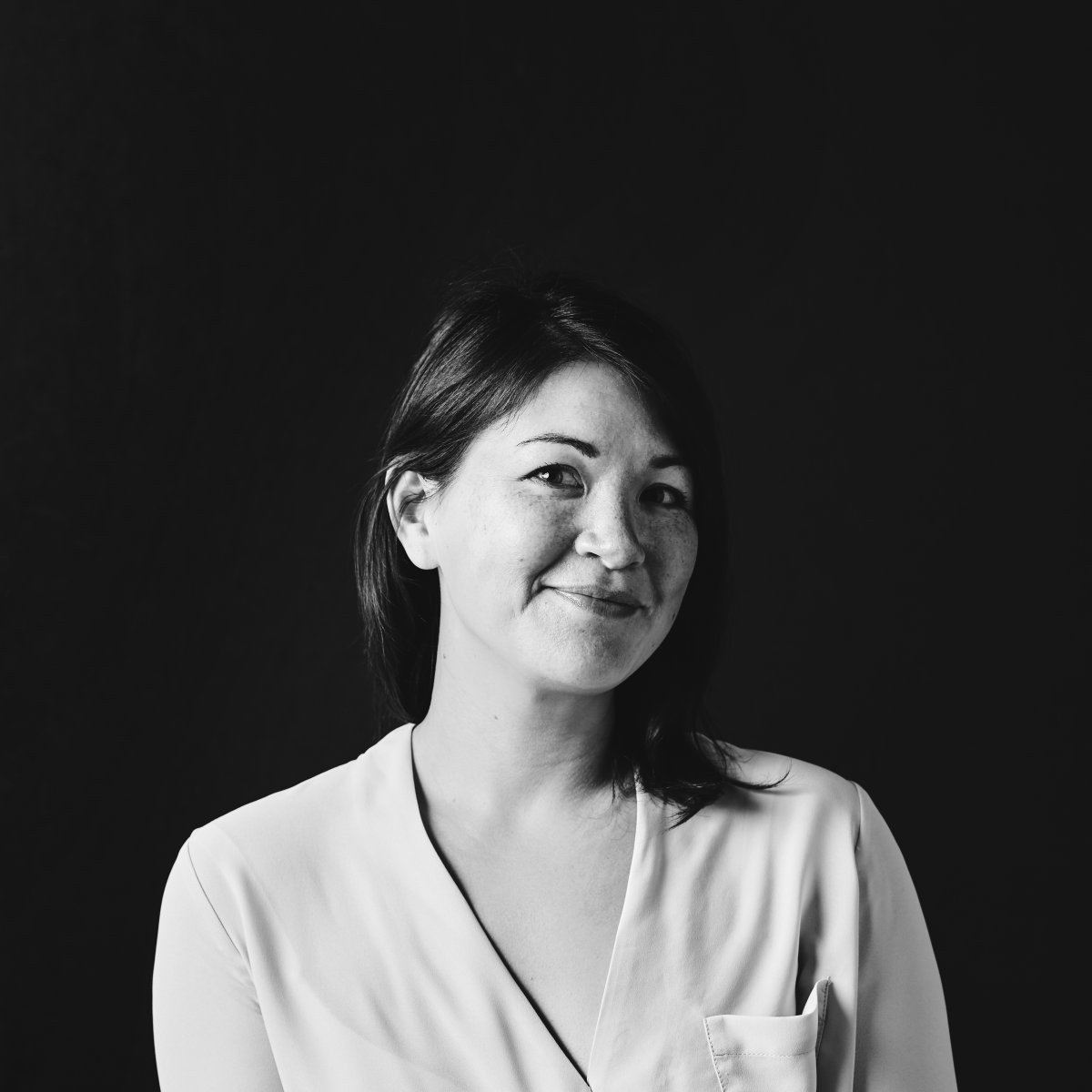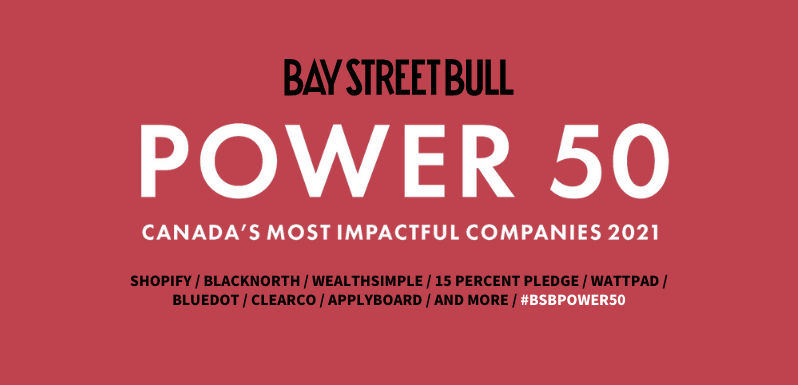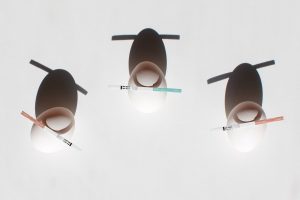[vc_row][vc_column][vc_column_text]Rachael Newton wants to change the dialogue around periods. As the founder nixit, she is focused on providing a high-quality product and a platform to educate and create a discussion about menstrual health.
With the company’s unapologetic tone and refusal to be discreet, nixit is starting conversations that have previously been kept quiet. The bold-coloured, gender-neutral brand doesn’t shy away from its purpose and was created by Newton when she realized how much waste was being created through menstrual products.
“Part of our mission at nixit is to empower people to make the decision that’s right for their body, and we’re educating them through that process,’ said Newton. “We’re telling people ‘Look, you’ll produce 450lbs of period waste in your lifetime. You’ll use 11,000 tampons if you’re a tampon user and they’ll take 500 years to biodegrade.’”
Unlike traditional menstrual cups, the nixit doesn’t sit in the vaginal canal, and therefore, doesn’t require a seal to stay in place. Newton got the idea based on how a contraceptive diaphragm sits after she couldn’t figure out what kind of menstrual cup to use based on confusing guidelines that depended on things like age or whether or not you had had kids.
Now, what started as finding a solution for herself, has become a solution for people across the world. And on nixit’s journey to changing the way periods are experienced, Newton has been intentional with changing the way periods are discussed as well.
A quick look at the nixit Instagram shows pictures of human anatomy and a celebration of the monthly gift from Mother Nature. Unlike the blue liquid tests shown on TV, Newton wants nixit to showcase the realities of a period rather than shying away from it.
“We had a post on Instagram the other day, which was of a nixit with real blood in it and it was our most engaged with post from the last six months because people were like, ‘We never see posts like this. Thank you for posting something that’s real and honest, and actually representative of what my period looks like,’” she said.
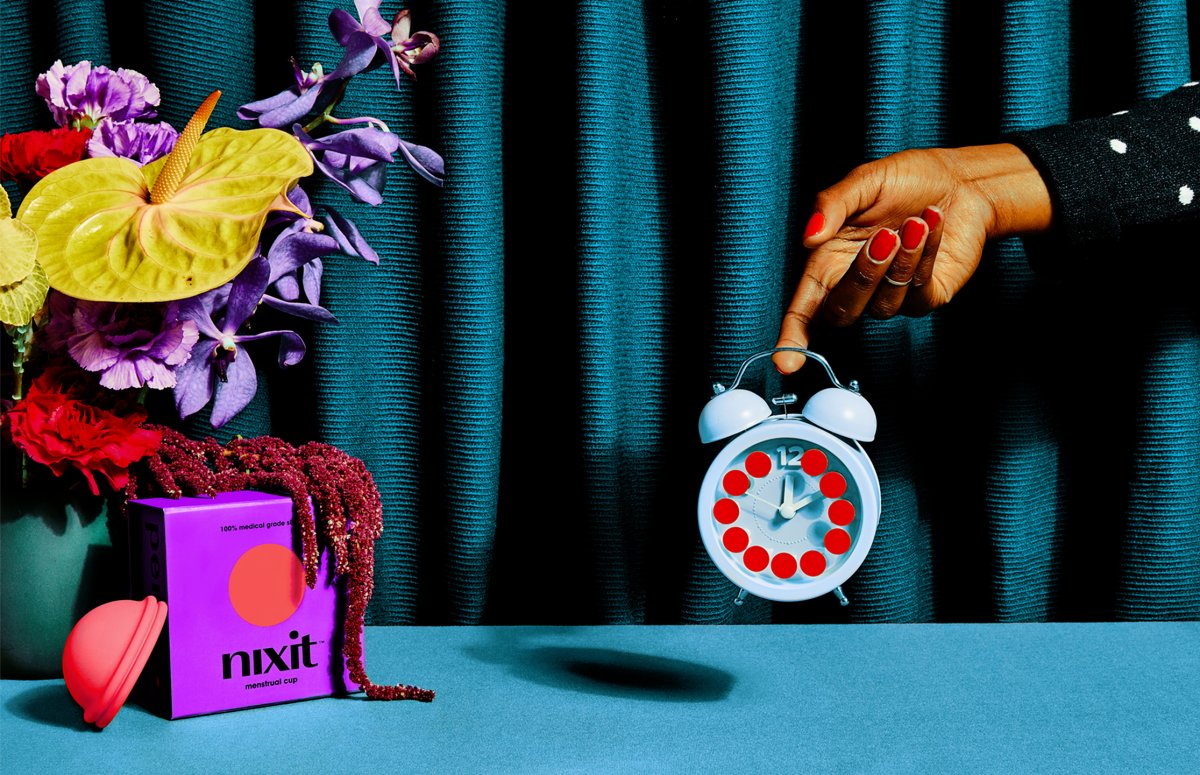

“I think it’s important for Canadians, in general, to be more aware of Health Canada requirements and to really look at what they’re putting in into their bodies and the effect that it might have on them,” said Newton.
For this week’s Women Who Lead Spotlight, Bay Street Bull spoke with Rachael Newton, Founder of nixit, about changing the conversation around periods and defining what a menstrual product can do for users and the environment.[/vc_column_text][vc_text_separator title=”Q&A” color=”custom” style=”dotted” border_width=”4″ accent_color=”#f46161″][vc_column_text]You were a practicing lawyer before launching nixit. How did that change come about?
I was a lawyer, specializing in hedge funds and exchange-traded funds for about 15 years. I was based in the UK and my husband’s Canadian. So, once we had our kids, we decided to move back to North America, but we sort of stopped off by the Caribbean for a year first, which was really nice. My kids were small, so I wasn’t working and I was living on this island with lots of time to think. I often think that if I hadn’t lived out there, then nixit wouldn’t have happened because my mind was always busy before.
There wasn’t any recycling on the island, so all of our waste went to a big landfill. It was called Mount Trashmore, and it’s a huge amount of trash in the middle of the island. So, we quickly became really conscious of the waste we were producing. I had reduced our amount of waste in lots of other ways and I had looked into menstrual cups before, but I just found them all quite confusing.
They seemed to depend on your age, whether you have had kids or not, how long your vaginal canal is, how low or high your cervix is—there were all these sorts of different factors. So, I just never bought one. I started looking into them and then I started looking into the waste that traditional menstrual products produce and I really wanted to make the switch.
I remembered a friend of mine at law school trying to convince me to get a contraceptive diaphragm and she mentioned that sometimes when she got her period, she didn’t notice. And that’s why nixit is a bit different from traditional menstrual cups: it’s placed where a contraceptive diaphragm sits. By doing so, it eliminates a lot of the issues that people experience with traditional cups.
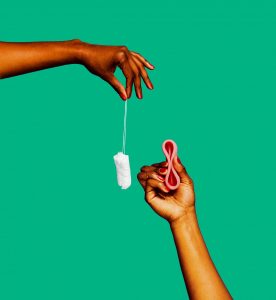

As a lawyer, I am extremely risk-averse. So, this is not something that I ever imagined myself doing. But I became convinced—and still am—that it would be a better option for people who menstruate and that we needed to get it out there. I would not stop talking about it with my husband and eventually, he was like, “Look, if you’re just going to keep on talking about this, why don’t you actually start it? Look into manufacturers, do some budgeting, work out whether this is going to be possible.” I had the time, I wasn’t actively working, so I was like, “You know what? That’s not gonna cost me anything. I’ll speak to people and start doing more research and designing,” and it just sort of went from there. It was a very organic process.
I went down that route and I just continued. I remember getting to the product shoot and thinking, “This is crazy. I’ve developed this product We’ve made it. We’re shooting it. We’re going to start selling it.” I don’t think I ever thought that it would necessarily get there. But here we are today.
On the topic of menstrual hygiene, and periods in general, there’s a lot of misconceptions. Did you have any big misconceptions while you grew up? What have you learned throughout this process that you wish you knew before?
So many things. With the environment that I grew up in, we were taught that periods were kind of gross. No one ever celebrates them or acknowledges that they are this sort of remarkable thing that happens to us for a reason. That whole conversation and taboo associated with periods for so long is something that became really apparent to me, the more I began to dive into the products that are available to us and the messaging around them.
That conversation was something I was keen to focus on when we were bringing nixit to market and I’m still super focused on it. We do get some comments like, “Oh, that’s disgusting. Why would I want to see my period blood.” But for a lot of people, it’s not a bad thing to see it and to recognize and understand your flow or become more in touch with your cycle. I think a lot of people only start period tracking when they’re trying to conceive. And actually, it’s sort of a general measure of health and well-being—it’s a great thing to be looking at regularly.
Then, because of that lack of discussion around periods, there hasn’t been enough discussion around the products that we’ve been using traditionally. I began to look into tampons and realized that there’s no material list on a box of tampons. I think part of our mission at nixit is to empower people to make the decision that’s right for their body, and we’re educating them through that process. We’re telling people, “Look, you’ll produce 450lbs of period waste in your lifetime. You’ll use 11,000 tampons if you’re a tampon user and they’ll take 500 years to biodegrade.” Talking about the effects that traditional products have on our bodies and the environment is really important. It allows people to make a fully informed decision about what’s right for them.
That unapologetic dialogue around periods is prominent throughout all of nixit’s campaigns and social media. You just mentioned some pushback in the comments, so I was wondering if there any hesitation in going forward with that?
Certainly, we get comments on social media, but I think that a lot of the comments stem from that lack of conversation. So, it’s our job to read them and to understand where these people might be coming from, and then to try and help them understand what our point of view is, and why we think it’s so important to talk about periods the way that we do.
On the other side of that coin, do you have any favourite customer feedback that you’ve received in regards to nixit as a product or its messaging?
Honestly, I still go on and look at all our messages and emails, because it just makes me so happy. We get DMs every day about how nixit has genuinely changed people’s period experiences for the better. And that’s amazing.
We had a post on Instagram the other day, which was of a nixit with real blood in it and it was our most engagement from a post in the last six months because people were like, “We never see posts like this. Thank you for posting something real and honest, and actually representative of what my period looks like.” So yeah, that was pretty nice.
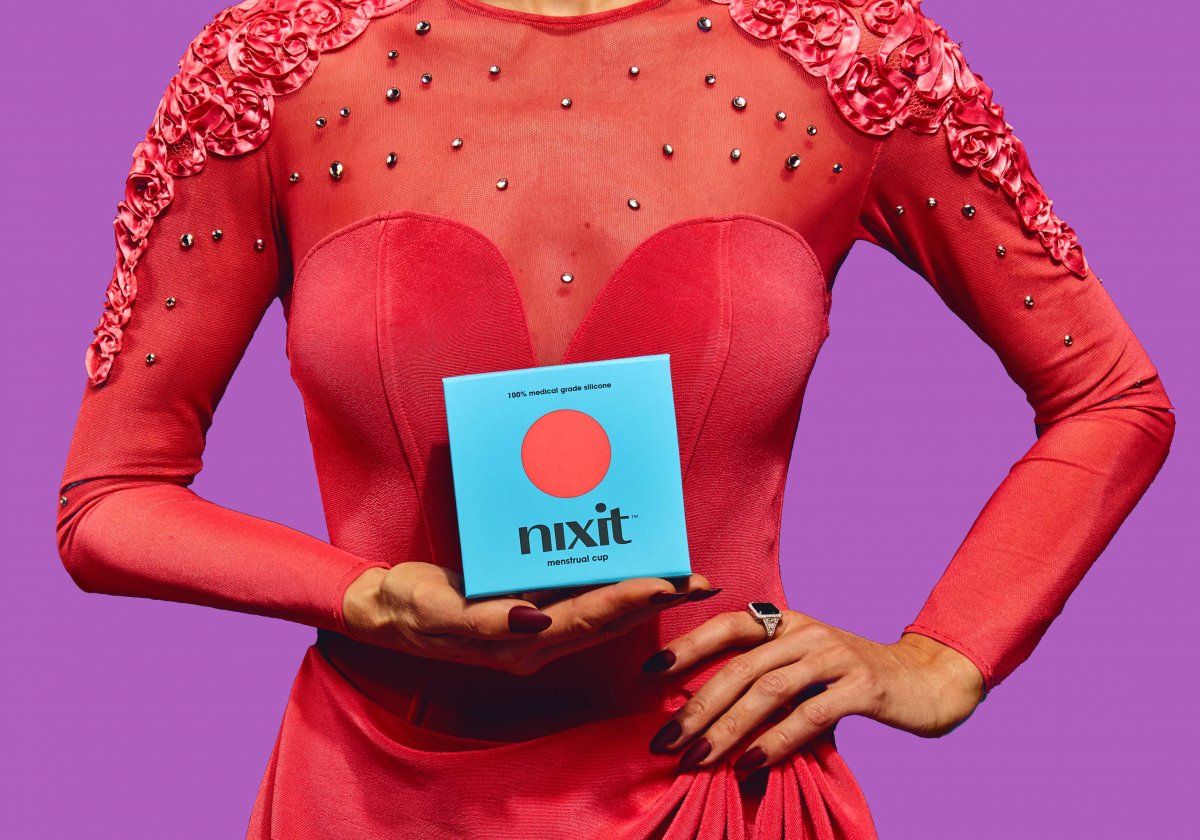

For people who are so used to the traditional methods of pads or tampons and are afraid to kind of deviate from what they may have used from their first period to now, what would you tell them about trying something new, like nixit?
I would say that we’re here to support. It can be daunting, particularly when you’re used to using something for years, but I think if we look back to that first period that we had, there was always a learning curve with those products as well. So, there might be a learning curve with nixit too, but I do think it’s worth it in terms of how comfortable your period can become.
You can get in touch with your cycle as well, which is something that I think is so removed with tampons. You don’t look at the tampon. You just kind of pull out and dispose of it. But, we [nixit] are here for everyone. We have a great support system to help people who are worried to use it or who are not quite sure if it’s their sort of thing.
You touched on it a little bit in terms of all the variations of cups, but for you, what sets nixit apart from what else is available on the market?
There’s a traditional cup: a bell-shaped cup that has a stem on the end, and to get them into place, you have to create a seal. They use suction to hold them in place. Then to remove them, you have to break the seal and remove them. The nixit doesn’t use suction to stay in place, which means that a lot of people find it easier to get in because you don’t have to kind of fiddle around with funny folds to create a seal or break a seal. It’s where it fits your anatomy holds it in place. That also means that a nixit holds about double the amount of a traditional cup. So, a lot of people find that they can go for a full 12 hours wearing a nixit. They just change it once in the morning and once at night. Also, because of where it says, it leaves your vaginal canal free as well. So you can have sex on your period if you want to.
As this is a Women Who Lead spotlight, is there a woman who leads in your life that’s inspired you to this day?
Is it too cheesy to say my mother? [laughs] I mean, it definitely would be my mom. She’s come from extremely humble beginnings. I think about the courage it took to leave her home country of Malaysia when she was really young to live in the UK, which is where she met my father. She’s had her own sort of entrepreneurial journey, she moved around a lot with my dad, and she always managed to find a job or create a job for herself. She’s extremely streetwise and very, very bright, but so driven and hardworking as well. I have immense respect for what she did when we were children, she would work nights as a nurse, and look after us in the day. So, I think she’s probably contributed deeply to my ambition.
What do you hope to see for the future of nixit and menstrual health overall?
In addition to the cup, we have our wipes. We have another product coming out next year to complement our cup and we’re currently working on a few ideas. I think there’s a lot to be done around just general empowerment, and making us feel good about the choices that we’re making and not being embarrassed about them. I think as a period care brand and a brand that speaks to that sort of empowerment and education piece, there are many exciting things that that we can do.
If you could go back and give yourself advice, whether that be with your own menstrual journey or with your career, is there anything that you wish you could tell yourself?
Regarding the entrepreneurial journey, it would be to not focus on the small stuff. I think I became sidetracked very easily with promises of, “if you do this small thing, you’ll get a huge return on investment.” I should have just focused on the main stuff.[/vc_column_text][vc_separator color=”custom” style=”dotted” border_width=”4″ accent_color=”#f46161″][/vc_column][/vc_row]


